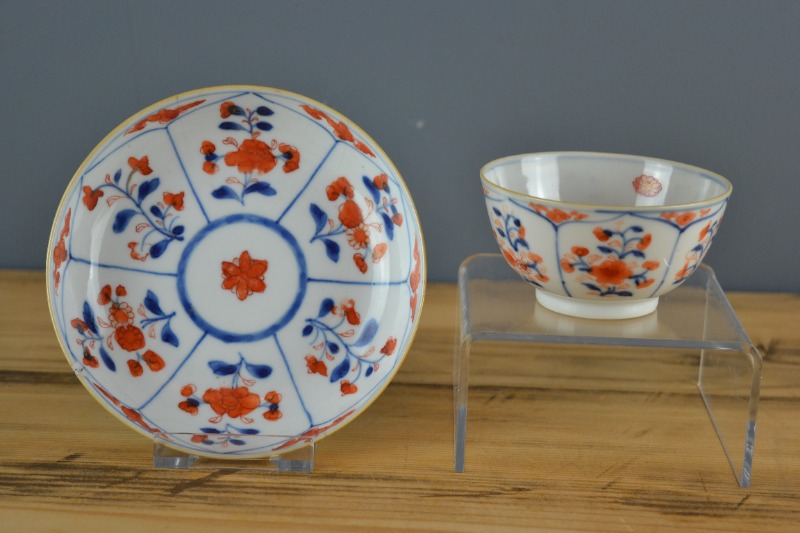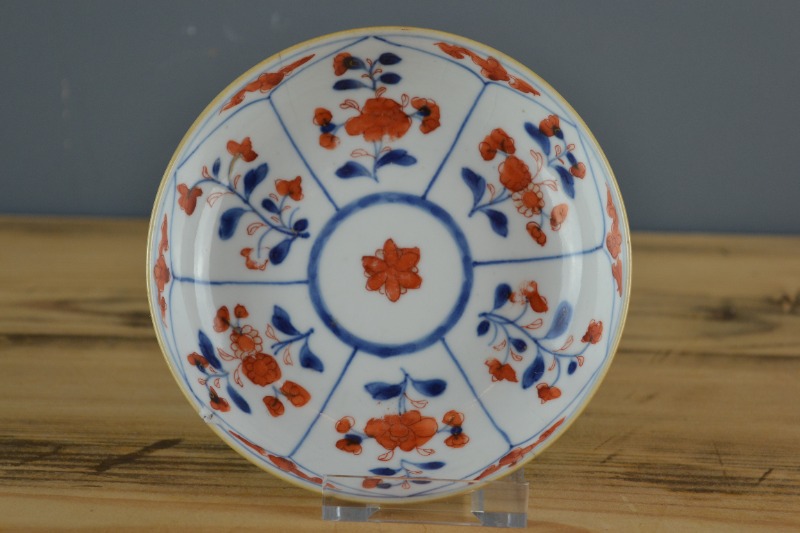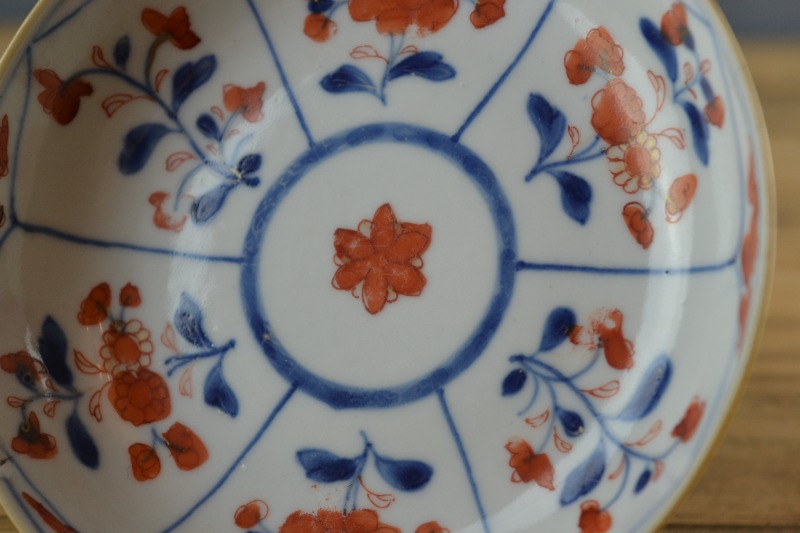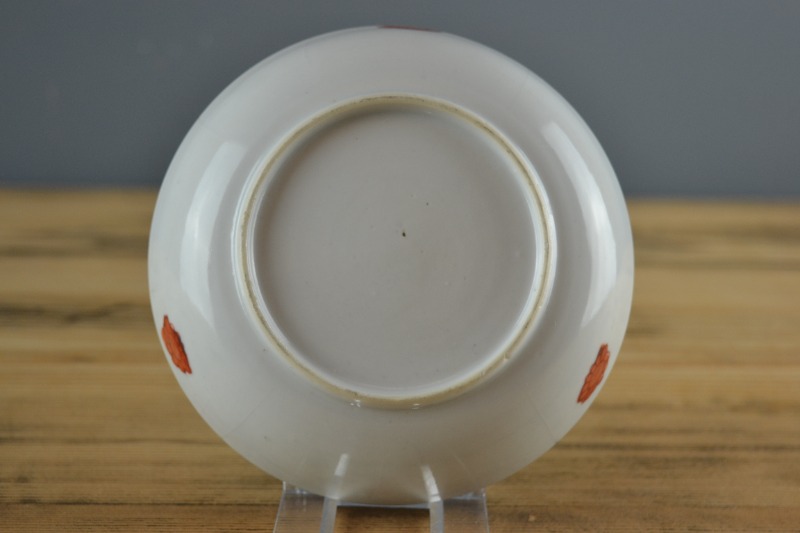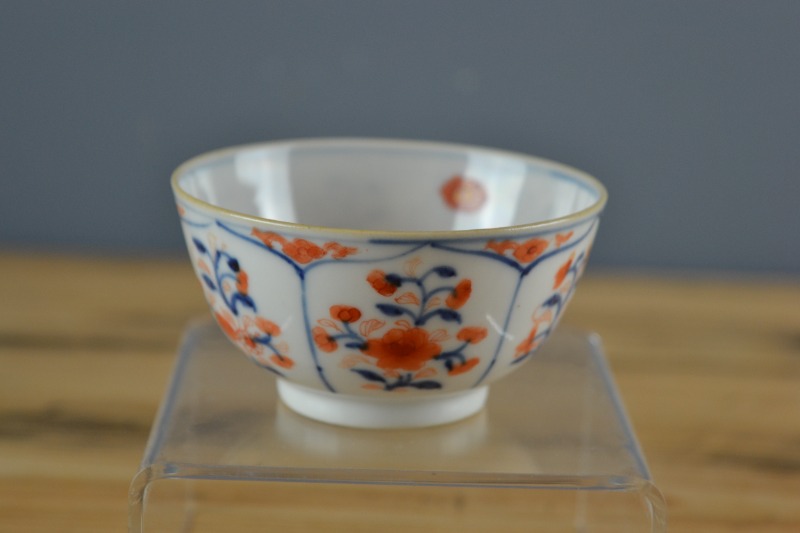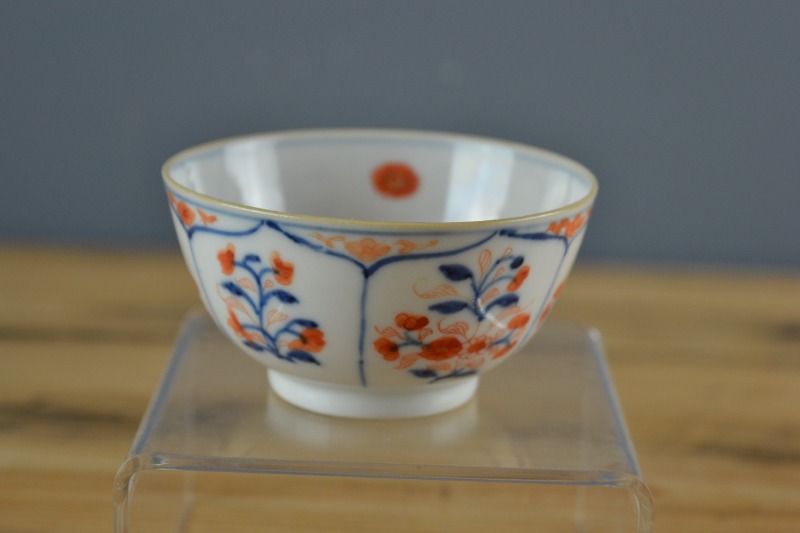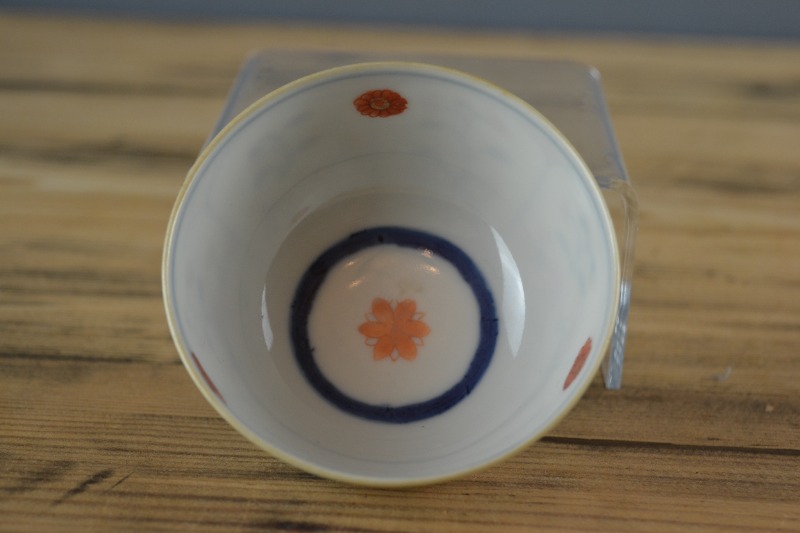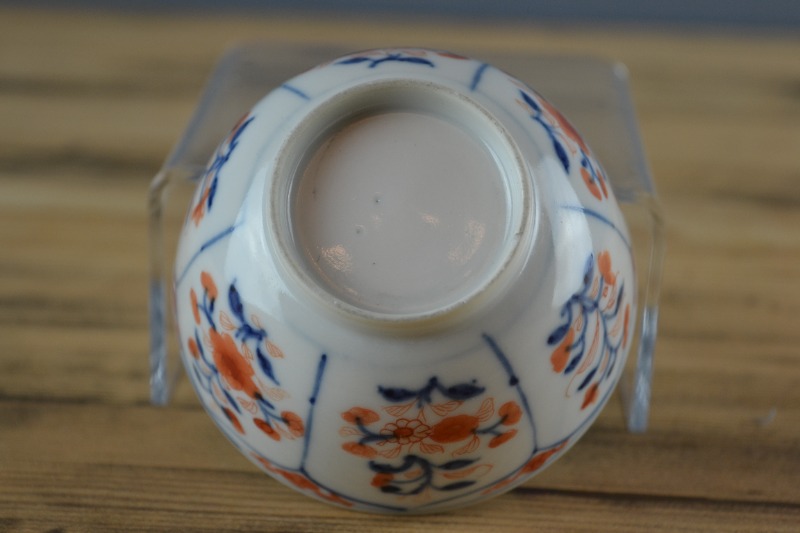Chinese Imari Cup and Saucer, Kangxi Period, c. 1700-1722
Age:
Circa. 1700-1722
Material:
Porcelain
Dimensions:
Cup dia.: 9cm
Saucer dia.: 13.5cm
Saucer dia.: 13.5cm
Shipping:
Standard Parcel
Price:
£ 180
This item is available to view and buy at:
Carse of Cambus
Doune
Stirlingshire
FK16 6HG
A fine cup and saucer from the first quarter of the 18th century, with underglaze blue and overglaze red enamel flowers within lotus segments. Painted in the Imari palette with gold highlights. This is a rare pattern, copying the petal-shaped segments of Kangxi ‘lotus’ plates.
Apart from the loss of some of its gold, particularly on the blue band around the inside bottom of the cup, the tea bowl is in perfect condition with no chips or cracks. The saucer has a chip and fine rim hairline.
When the Ming dynasty fell during the 2nd half of the 17th century, the Dutch East India Company (VOC) were unable to export much porcelain from China. They, therefore, turned to Japan as an alternative porcelain manufacturer. The Japanese Arita porcelain, exported through the port of Imari, proved very popular in Europe.
When the Chinese porcelain trade reopened for large-scale export, they copied the Japanese "Imari" design. This first Chinese Imari was produced at the end of the reign of the Chinese emperor Kangxi (1662-1722) and it remained popular up until the mid-18th century. As a general rule the Chinese Imari pieces are more finely potted, have a thinner and more even glaze then the Japanese. The red enamels are generally thinner and more translucent.

